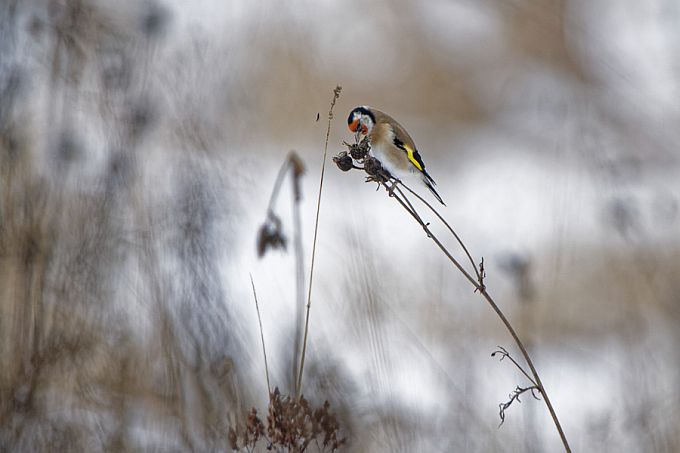Goldfinch Ohakalind Carduelis carduelis
The passing migration of goldfinches towards south ends with the arrival of frosts but the weather as well as winds play an important role..
Some ten thousand stay in
The social goldfinches move around in small groups in search of food and so they can comfortably be compared.
They have enough coulors for several species even though the plumage of the adults is rather similar. About the size of a great tit, weight less than twenty grams. The slightly larger male birds have a little more red in their head plumage and the yellow streak on the wing is a little broader and also more richly coloured.
The juveniles are easy to recognize in the flock – their plumage is still greyish-brown with narrow streaks but on the wings yellow feathers are already visible.
The seed-eating birds look to fill their bellies in areas overgrown with weeds: thistles, burdocks or composite-flowered plants.
See where goldfinches have been noted in
Note: Goldfinches, for long kept in cages as singing birds, have risen to literary fame through the fragment of a painting of a goldfinch by artist Fabritius that inspired Donna Tartt to her novel The Goldfinch.



